 |
 |
 |
| |
Effects of eradication of HCV on bone mineral density in HIV/HCV-coinfected patients - Bone density stable over 96 weeks after DAA cure in HIV/HCV group
|
| |
| |
Conference on Retroviruses and Opportunistic Infections (CROI), March 4-7, 2019, Seattle
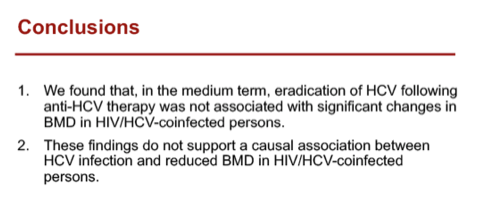
Mark Mascolini
HCV cure with direct-acting antivirals (DAA) in HIV-coinfected people did not affect bone mineral density (BMD) through 96 weeks in a 13-center Spanish study [1]. People with DAA-induced cures had the same tiny 96-week change in BMD as people not cured. Investigators proposed that their findings "do not support a causal association between HCV infection and reduced BMD in HIV/HCV-coinfected persons."
The Spanish team noted that research links HCV infection to higher risk of bone loss and fracture in people with HIV, but the mechanism remains unclear. Possibilities include severity of liver disease, microstructural abnormalities related to HCV infection, or declining BMD. To learn more about the possible impact of HCV cure on BMD in HIV/HCV-coinfected people, they conducted this prospective study.
The investigators measured BMD by DXA scan before anti-HCV therapy began and again at 96 weeks in coinfected people recruited from 13 centers in 2012-2014. Of the 160 people studied, 102 (64%) attained sustained virologic response (SVR) and 58 did not. The SVR and no-SVR groups were similar in proportion of men (77% and 71%), age (median 49.7 and 49.3), body mass index (median 24.4 and 23.8 kg/m2), proportion of current smokers (69% and 67%), and current heavy alcohol drinkers (2.9% and 1.7%).
From baseline to week 96, BMD change did not differ between the SVR group and the no-SVR group at the lumbar spine (median change -0.01 g/cm2 in both groups) or at the femoral neck (median change -0.02 g/cm2 in both groups). At both bone sites, proportions of people with normal BMD, osteopenia, or osteoporosis did not change significantly from baseline to week 96 in either the SVR group or the no-SVR group.
The researchers concluded that, "in the medium term, eradication of HCV following anti-HCV therapy was not associated with significant changes in BMD in HIV/HCV-coinfected persons." Those findings, they proposed, cast doubt on the hypothesis that HCV infection lowers BMD in HIV/HCV-coinfected people.
Reference
1. Carrero A, Berenguer J, Hontanon V, et al. Effects of eradication of HCV on bone mineral density in HIV/HCV-coinfected patients. Conference on Retroviruses and Opportunistic Infections (CROI). March 4-7, 2019. Seattle. Abstract 687.
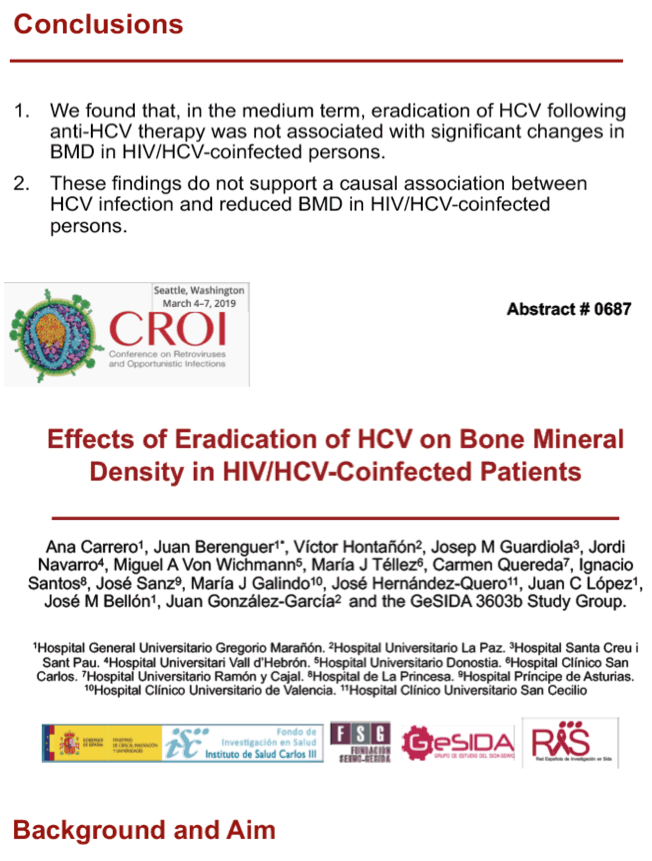
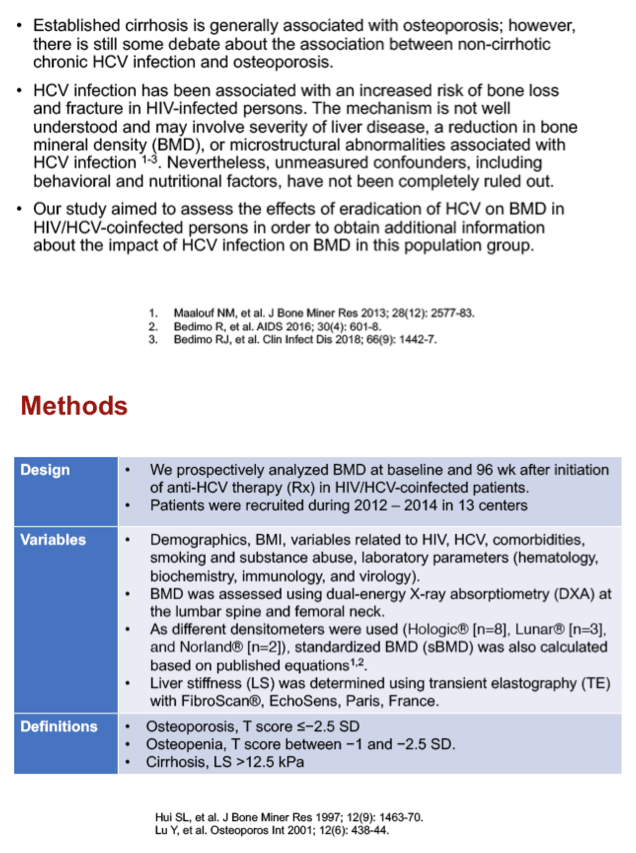
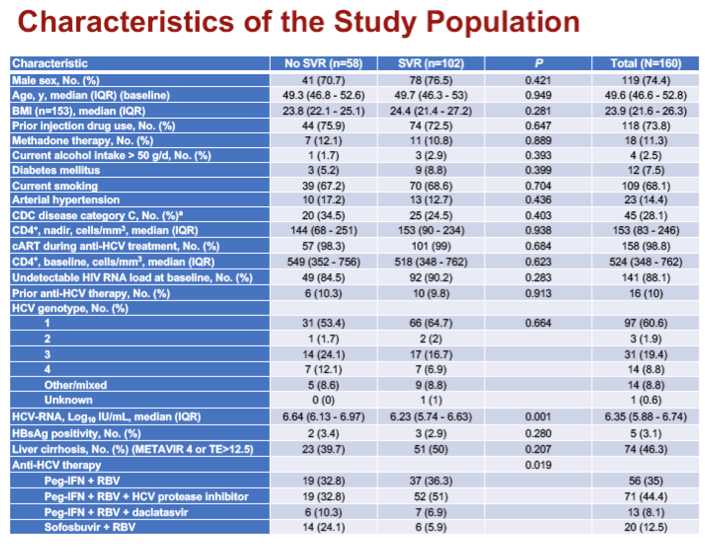

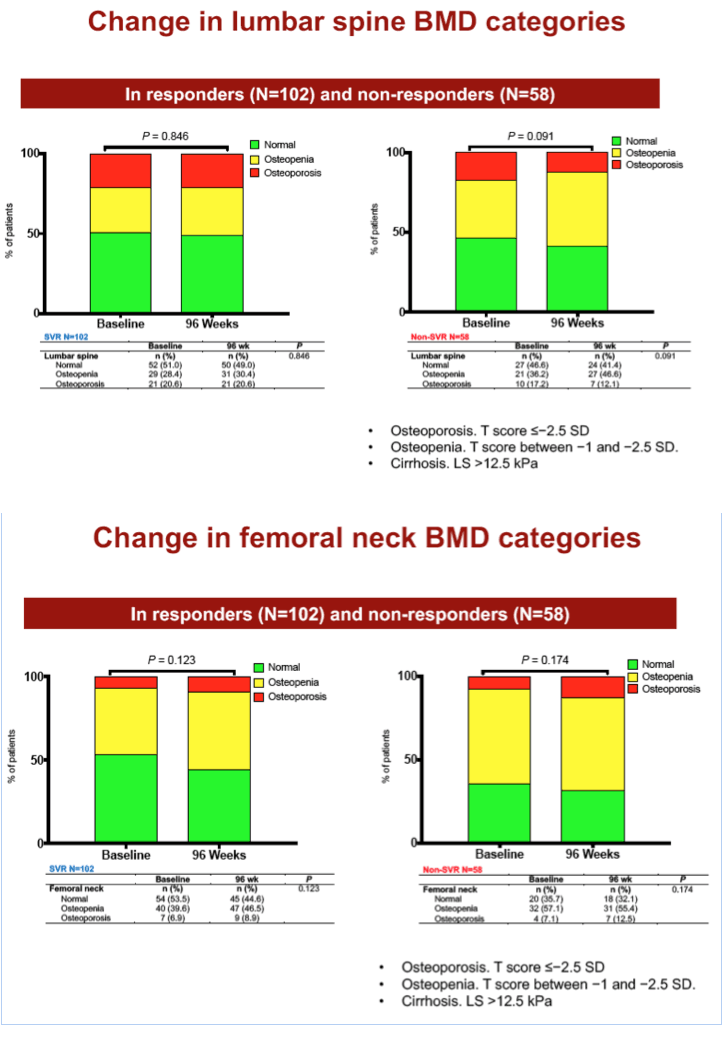
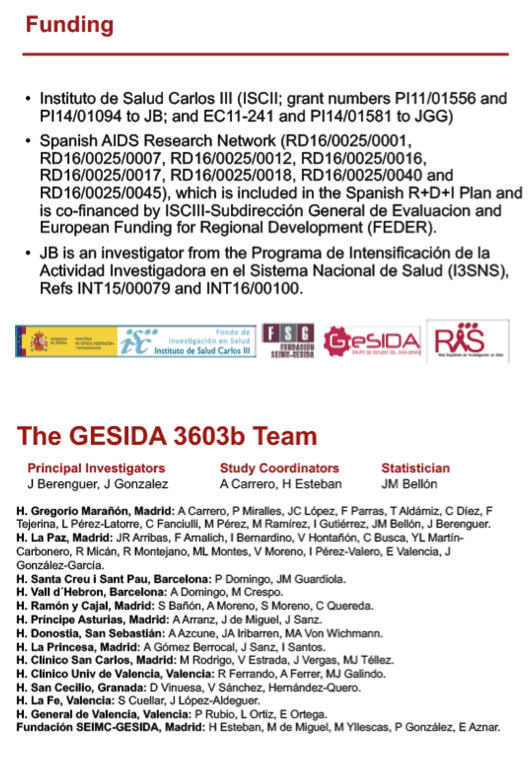
|
| |
|
 |
 |
|
|